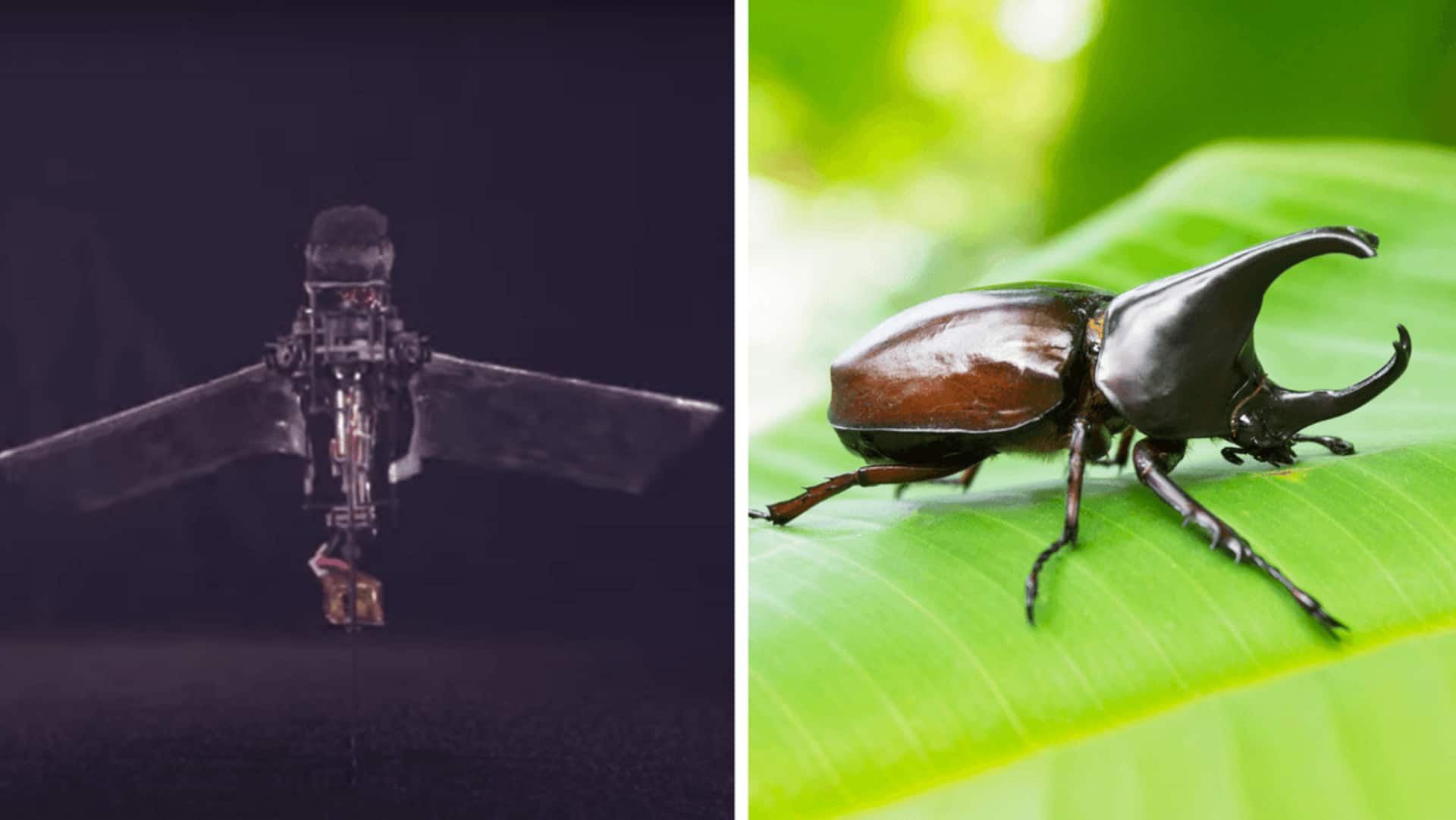
This tiny robot can fly like a beetle
What's the story
A group of international researchers has successfully developed a flapping microrobot, inspired by the unique flight mechanism of the rhinoceros beetle. The design of this innovative robot mimics the beetle's ability to deploy and retract its hindwings without muscle use, a feature that enhances takeoff and mid-air stability. To understand this mechanism, researchers used slow-motion cameras to study beetles in flight and replicate their wing movement in the robot.
Flight mechanism
A blend of elastic energy and flapping forces
The study revealed that beetles use elastic energy and flapping forces to deploy their hindwings for flight. They retract these wings with the help of their elytra, a modified, hardened forewing. This process does not rely on specific thoracic muscles. The researchers then applied this principle to flapping-wing microrobots, demonstrating passive wing deployment for takeoff, stable hovering, and rapid retraction upon landing or collisions.
Design innovation
How did it differ from previous prototypes?
To validate the passive wing deployment and retraction mechanism observed in beetles, researchers developed a flapping microrobot. Unlike the previous robots with fixed extended wings, this design incorporated an elastic tendon to facilitate wing folding and deployment, that were triggered by flapping motion. Experiments showed that the centrifugal force generated during flapping was enough to elevate the wings despite minor deviations from the expected angle.
Flight performance
Microrobot's flight performance and future implications
By adjusting the elevation threshold, the robot achieved stable flight forces comparable to those of non-retractable wing designs. The robot's wings could decrease their span from 20cm to 3cm when folded and deployed within two flapping cycles, retracting within 100 milliseconds upon motor deactivation. Testing included untethered takeoff, hovering, and landing, demonstrating the robot's ability to maintain stable flight and retract wings when hitting obstacles.